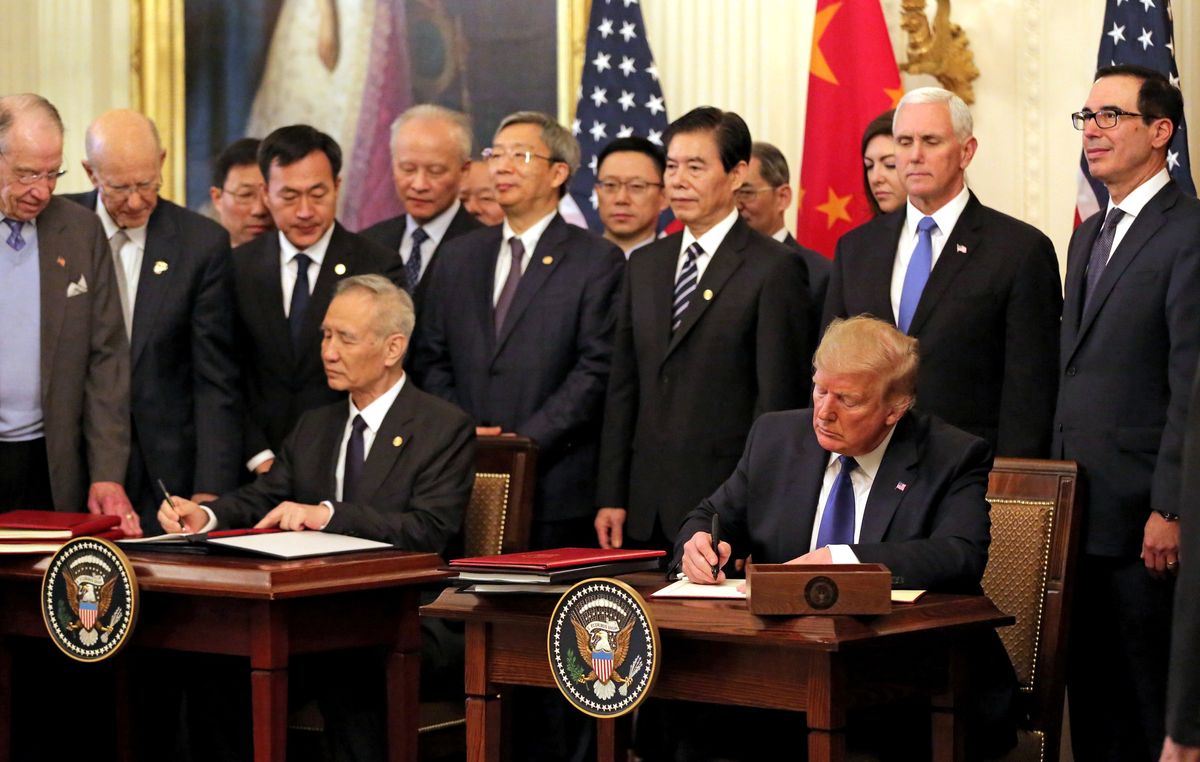US and China sign trade deal, easing tensions

A few minutes every morning is all you need.
Stay up to date on the world's Headlines and Human Stories. It's fun, it's factual, it's fluff-free.
After two years of negotiations, the United States and China have signed an agreement, easing tensions in the ongoing trade war. US President Donald Trump said the pact would be “transformative” for the US economy. “Together we are righting the wrongs of the past and delivering a future of economic justice and security for American workers, farmers and families,” Trump said.
According to the deal, the majority of the border taxes remain in place, with most tariff removals likely to be done in phase two which is expected after the US presidential elections in November 2020.
However, the 86-page agreement calls for China to increase its purchases of US goods by more than $200 billion over the next two years. Beijing has also agreed to crack down on the use of stolen or forced technology transfers to Chinese firms and is now prohibited from artificially devaluing its currency.
“It is phase one, it is 86 pages long, although to be frank, most of it is appendices and annexes about various products. President Trump said the US wouldn’t lift most of the tariffs until phase two,” said Richard Quest reporting from the CNN desk.
‘Win-win’ deal
Chinese leaders are calling it a “win-win” deal that would help foster better relations between the two countries. “There’s a lot of work to do ahead. Bottom line is, they should enjoy today but not wait too long to get back to the table for phase two,” said Jeremie Waterman, president of the China Center at the US Chamber of Commerce.
The United States and China have engaged in a tit-for-tat tariff war since 2018, which has led to import taxes being levied on more than $450 billion worth of traded goods. The trade surplus between the states dropped by 8.5%, from $323.3 billion to $296 billion in 2019.
Two-year war
In March 2018, Trump announced a 25% tariff on steel and a 10% tariff on aluminum, in a crackdown on imports. Beijing responded with 15 – 25% tariffs on 128 various US products, including meat, fruits, wine and pork. In September 2019, the United States then hiked the existing tariffs from 10% to 25%.
Trump’s public support of the pro-democracy protests in Hong Kong, a semi-autonomous Chinese state, saw China slap sanctions on US-based charities.
In January 2020, the United States removed the currency manipulator status label from China ahead of the phase-one trade agreement on January 15.
Have a tip or story? Get in touch with our reporters at tips@themilsource.com




Comments ()